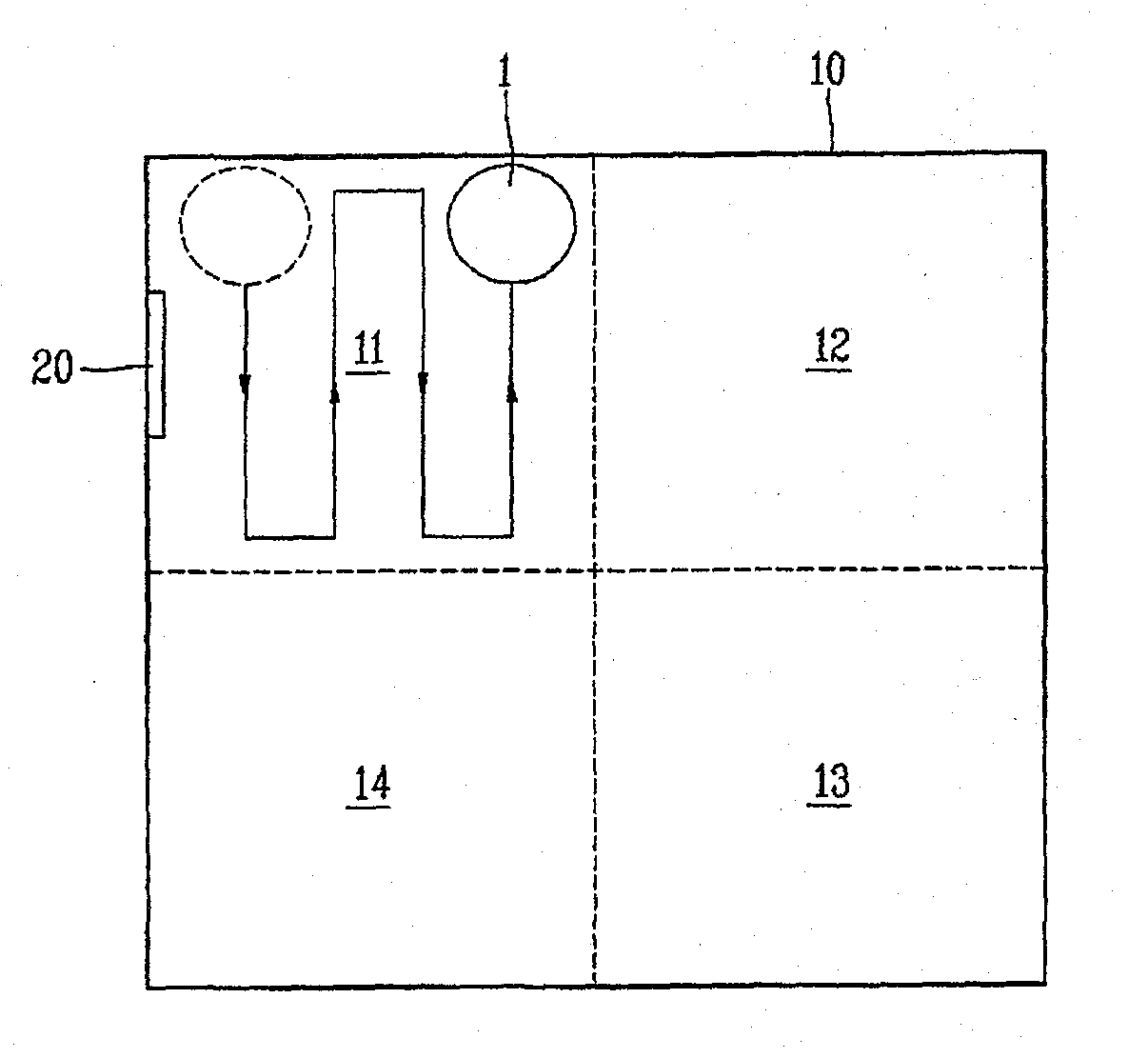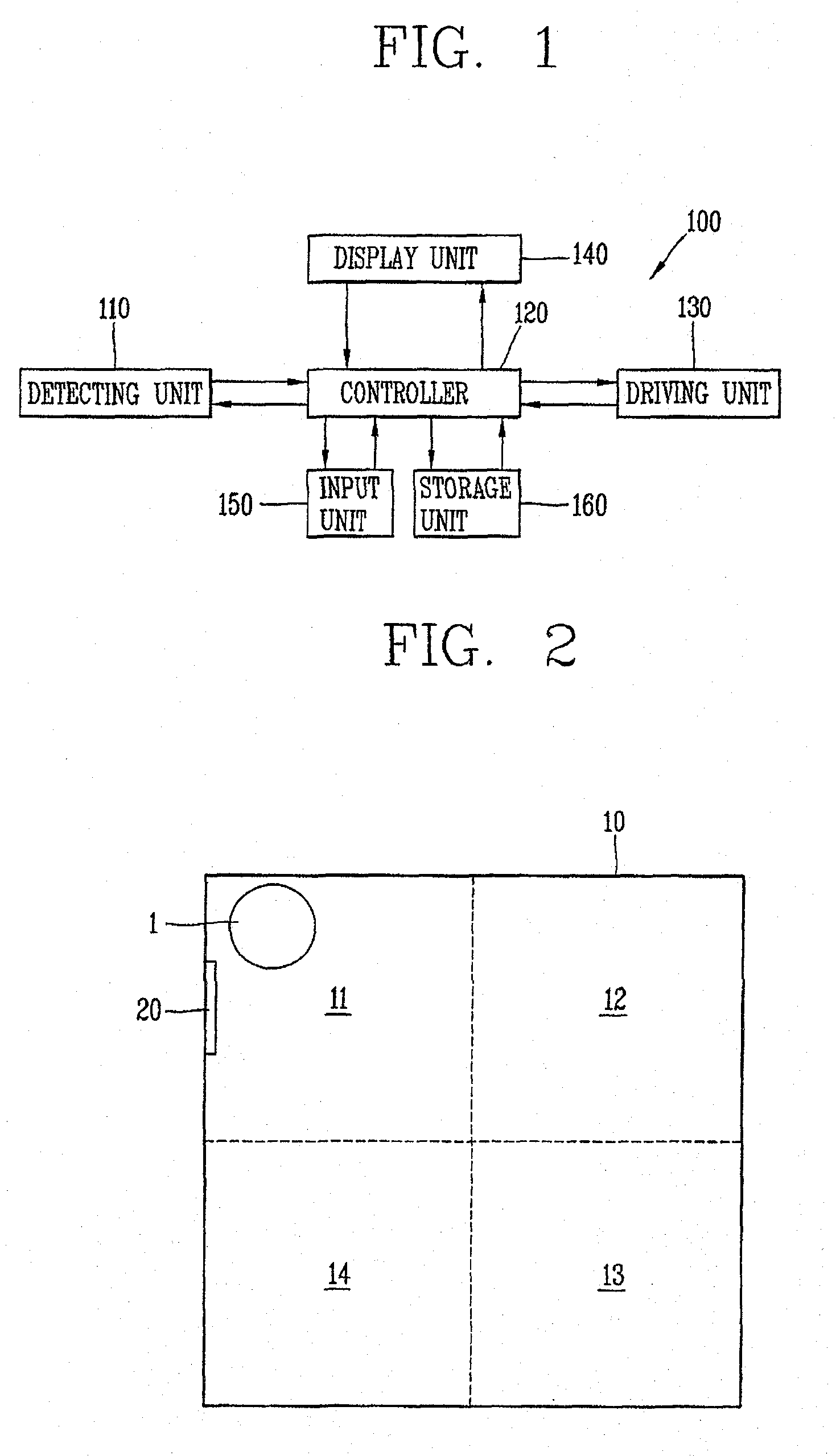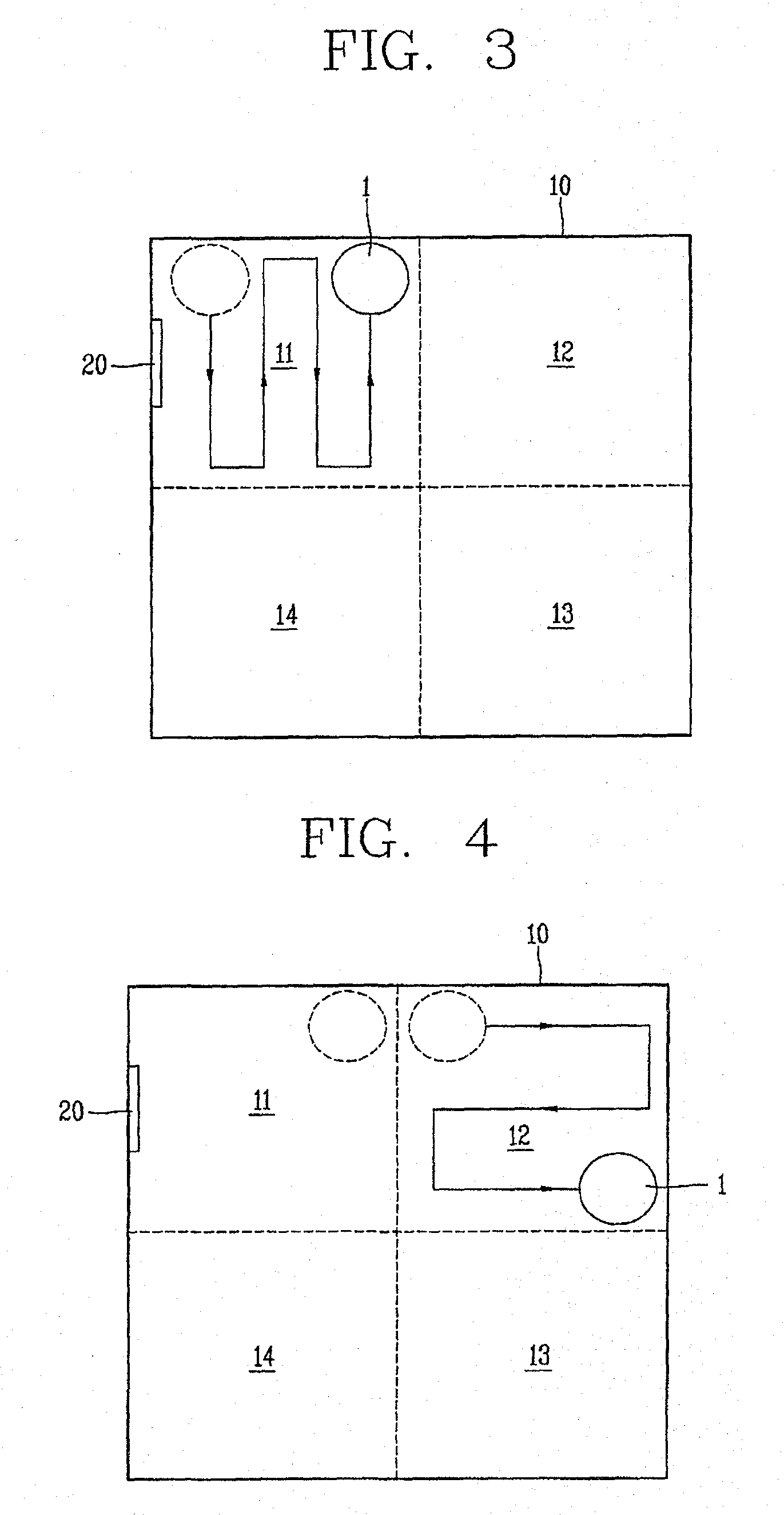Detecting apparatus of robot cleaner and controlling method of robot cleaner
- Summary
- Abstract
- Description
- Claims
- Application Information
AI Technical Summary
Benefits of technology
Problems solved by technology
Method used
Image
Examples
first embodiment
[0056]FIG. 1 is a schematic block diagram showing some elements of a robot cleaner according to the present invention.
[0057]With reference to FIG. 1, a robot cleaner (1 in FIG. 2) according to the first embodiment of the present invention performs cleaning on a cleaning target space (10 in FIG. 2) and may include a detecting unit 110, a controller 120, a driving unit 130, a display unit 140, an input unit 150, and a storage unit 160.
[0058]The detecting unit 110 can detect an obstacle, the surface of a wall, or the like, positioned in the cleaning target space 10, and may include an ultrasonic sensor or the like.
[0059]The detecting unit 110 may include a location-based sensor to recognize the location of the robot cleaner 1 in the cleaning target space 10. An inertial sensor may be applied as the location-based sensor.
[0060]The controller 120 may control a traveling or cleaning pattern of the robot cleaner 1. In this embodiment, the controller 120 may set a certain cleaning region in...
second embodiment
[0090]FIG. 6 is a flow chart illustrating the process of a method for controlling the robot cleaner according to the present invention.
[0091]A method for controlling the robot cleaner 1 according to the second embodiment of the present invention will now be described with reference to FIG. 6.
[0092]First, the robot cleaner 1 sets a certain cleaning region, namely, the first cleaning region 11, of the cleaning target space 10 (S200), and cleans the set first cleaning region 11 (S210).
[0093]At this time, while the robot cleaner 1 performs cleaning on the first cleaning region 11, the movement distance of the robot cleaner 1 is accumulated and stored in the storage unit 160.
[0094]Thereafter, it is checked whether or not the accumulated movement distance of the robot cleaner 1 reaches a pre-set movement distance (S230).
[0095]If the accumulated movement distance of the robot cleaner 1 reaches the pre-set movement distance, the location of the robot cleaner 1 is corrected based on the dock...
third embodiment
[0103]The robot cleaner and its control method according to the present invention will now be described with reference to FIGS. 7 to 9.
[0104]Reference numerals 30 and 40 shown in the FIGS. 7 and 8 are defined as the first and second cleaning regions 30 and 40, respectively.
[0105]Reference numerals 31 and 41 are start points of the robot cleaner 1 in the first and second cleaning regions 30 and 40, 32 and 42 are arrival points of the robot cleaner 1 in the first and second cleaning regions 30 and 40, and 33 and 43 are middle points of the robot cleaner 1 in the first and second cleaning regions 30 and 40, respectively.
[0106]First, the robot cleaner 1 starts from the start point 31 of the first cleaning region 30 and travels by a certain distance up to the arrival point 32 of the first cleaning region 30 (S300).
[0107]This process is performed by allowing the robot cleaner 1 to travel by the pre-set certain distance from the start point 31. An end point of the pre-set certain distance ...
PUM
 Login to View More
Login to View More Abstract
Description
Claims
Application Information
 Login to View More
Login to View More - R&D
- Intellectual Property
- Life Sciences
- Materials
- Tech Scout
- Unparalleled Data Quality
- Higher Quality Content
- 60% Fewer Hallucinations
Browse by: Latest US Patents, China's latest patents, Technical Efficacy Thesaurus, Application Domain, Technology Topic, Popular Technical Reports.
© 2025 PatSnap. All rights reserved.Legal|Privacy policy|Modern Slavery Act Transparency Statement|Sitemap|About US| Contact US: help@patsnap.com



